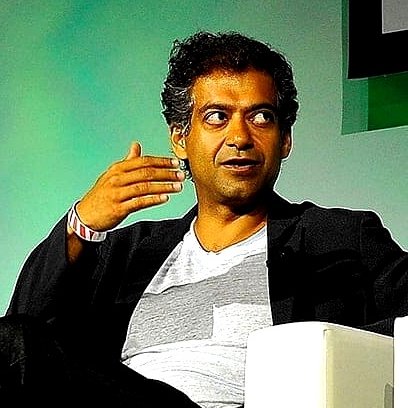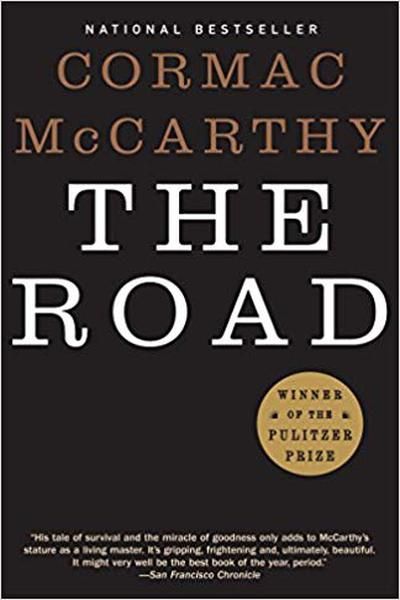The Quantum Moment Book Summary
In "The Quantum Moment," Robert P. Crease and Alfred Scharff Goldhaber explore the profound implications of quantum physics on our understanding of reality. They unravel how quantum mechanics challenges our perceptions and influences both science and society. With vivid illustrations and historical anecdotes, the authors bring to life the enigmatic nature of particles that exist in multiple states. Readers are invited to ponder the philosophical dilemmas posed by quantum theory and its relevance in the modern world. Join this enlightening journey that promises to reshape your view of the universe and your place within it.
By Robert P Crease, Alfred Scharff Goldhaber
Published: 2014
"In the theater of the quantum realm, every observation is a dramatic act that shapes reality, revealing the intricate dance of possibility and existence."
Book Review of The Quantum Moment
The fascinating story of how quantum mechanics went mainstream. The discovery of the quantum—the idea, born in the early 1900s in a remote corner of physics, that energy comes in finite packets instead of infinitely divisible quantities—planted a rich set of metaphors in the popular imagination. Quantum imagery and language now bombard us like an endless stream of photons. Phrases such as multiverses, quantum leaps, alternate universes, the uncertainty principle, and Schrödinger's cat get reinvented continually in cartoons and movies, coffee mugs and T-shirts, and fiction and philosophy, reinterpreted by each new generation of artists and writers. Is a "quantum leap" big or small? How uncertain is the uncertainty principle? Is this barrage of quantum vocabulary pretentious and wacky, or a fundamental shift in the way we think? All the above, say Robert P. Crease and Alfred Scharff Goldhaber in this pathbreaking book. The authors—one a philosopher, the other a physicist—draw on their training and six years of co-teaching to dramatize the quantum’s rocky path from scientific theory to public understanding. Together, they and their students explored missteps and mistranslations, jokes and gibberish, of public discussion about the quantum. Their book explores the quantum’s manifestations in everything from art and sculpture to the prose of John Updike and David Foster Wallace. The authors reveal the quantum’s implications for knowledge, metaphor, intellectual exchange, and the contemporary world. Understanding and appreciating quantum language and imagery, and recognizing its misuse, is part of what it means to be an educated person today. The result is a celebration of language at the interface of physics and culture, perfect for anyone drawn to the infinite variety of ideas.
Book Overview of The Quantum Moment
About the Book Authors
Robert P Crease
Robert P. Crease is an accomplished American physicist and author known for his engaging writings that bridge the gaps between science, history, and philosophy. He is the author of several notable works, including 'The Prism and the Pendulum: The ten most beautiful experiments in science' and 'The Physics of Race: How Scientists Tackle the Biological Aspects of Race.' Crease's writing is characterized by clarity and a thoughtful approach to complex scientific concepts, often incorporating historical narratives that enrich the reader's understanding. He serves as a professor at Stony Brook University and is a frequent contributor to various publications.
Alfred Scharff Goldhaber
Alfred Scharff Goldhaber is a distinguished author and physicist known for his contributions to both science and literature. He has co-authored significant works such as 'Quantum Properties of Light' and 'Quantum Theory: Concepts and Methods,' which showcase his deep understanding of complex scientific principles. Alongside his academic pursuits, Goldhaber writes with clarity and precision, bridging the gap between intricate scientific concepts and accessible language for readers. His interdisciplinary approach has garnered attention and respect in both the scientific community and literary circles, making him a unique voice in the integration of science and literature.
Book Details
Key information about the book.
- Authors
- Robert P Crease, Alfred Scharff Goldhaber
- Published
- October 2014
- Publisher
- National Geographic Books
- ISBN
- 0393067920
- Language
- English
- Pages
- N/A
- Genres
- Physics and AstronomyPhilosophy of MindPhilosophyScience and Nature
Purchase Options
Support local bookstores: BookShop gives a portion of each sale to independent bookshops!
Similar books you might like →
A Brief History of Time Book Summary
In "A Brief History of Time," Stephen Hawking takes readers on a captivating journey through the cosmos, exploring the nature of time, black holes, and the universe's beginnings. With stunning clarity, he unravels complex scientific concepts, inviting everyone—from curious laypersons to seasoned physicists—to ponder the mysteries of existence. Hawking's charismatic storytelling challenges our perceptions of reality and time itself, posing profound questions about the universe's fate. As he merges science with philosophy, the reader is compelled to reflect on their place in a vast, enigmatic cosmos. Prepare to be inspired and awed by a narrative that transcends mere facts, pushing the boundaries of human understanding.
The Road Book Summary
In a bleak, post-apocalyptic world, a father and his young son navigate a barren landscape filled with danger and despair. As they struggle to survive against the harsh elements and lurking threats, their bond is tested, and the father clings to hope. The boy embodies innocence and a longing for the remnants of civilization, while the father wrestles with the darkness of their reality. This haunting tale explores the themes of love, survival, and morality in the face of overwhelming adversity. Will they reach their destination or succumb to the desolation that surrounds them?
Wealth And Poverty Of Nations Book Summary
In 'Wealth and Poverty of Nations,' David S. Landes explores the complex tapestry of economic history and development across the globe. He delves into why some nations flourish while others remain entrenched in poverty, examining cultural, geographical, and historical factors that have shaped economies. Through engaging anecdotes and incisive analysis, Landes challenges simplistic explanations, revealing the intricate interplay of innovation, tradition, and policy. This book not only illuminates past economic trajectories but also provokes thought about the future of global prosperity. Prepare to question your assumptions about wealth and consider the paths nations have taken in their pursuit of success.
Yes! Book Summary
In 'Yes!', Noah J. Goldstein, Steve J. Martin, and Robert Cialdini unveil the art of persuasion through compelling research and real-world examples. The authors explore the psychological principles that drive our decisions and how small changes can lead to big impacts on compliance. Each chapter unpacks powerful strategies that can help you become more influential in everyday interactions. Are you ready to discover the hidden forces that can turn a 'no' into a 'yes'? Dive in to unlock the secrets of effective persuasion and transform your communication skills!
The Breakthrough Book Summary
In 'The Breakthrough', Gwen Ifill chronicles the extraordinary journey of pivotal African American leaders who reshaped politics and society in the United States. Through gripping narratives and personal accounts, she unveils their struggles, triumphs, and the powerful impact they had on future generations. Ifill masterfully illustrates the intersections of race, ambition, and resilience against the backdrop of a country undergoing significant transformation. This compelling exploration raises profound questions about identity, power, and the meaning of success. Can the voices of the past guide us to a more equitable future?
What Does It Mean to Be Human? Book Summary
In 'What Does It Mean to Be Human?', authors Frederick Franck, Janis Roze, and Richard Connolly explore the intricate tapestry of humanity, weaving together art, philosophy, and personal anecdotes. They delve into questions of existence, essence, and the connections that bind us as human beings. Through vivid illustrations and poignant reflections, the book invites readers to examine their own humanity and place in the world. Each chapter challenges preconceived notions, urging a deeper understanding of the shared experiences that define us all. Prepare to embark on a thought-provoking journey that leaves you pondering the very nature of being.
Handbook of Social Psychology, Volume 1 Book Summary
Dive into the depths of the human mind with the 'Handbook of Social Psychology, Volume 1,' where renowned experts explore the intricacies of social behavior and theory. From the nuances of interpersonal attraction to the ripple effects of group dynamics, this comprehensive volume unveils the science behind our interactions. Each chapter is a gateway to understanding how societal influences shape our beliefs, decisions, and identities. With a rich tapestry of research and real-world applications, this book promises to challenge your preconceptions about humanity. Prepare to embark on a captivating journey through the psychology that governs our social world!
The Elements of Scrum Book Summary
Delve into the transformative world of Scrum with 'The Elements of Scrum,' where authors Chris Sims and Hillary Louise Johnson unravel the principles that drive agile project management. This insightful guide not only explains the core components of the Scrum framework but also illustrates how they can revolutionize teamwork and productivity. Through vivid examples and practical tips, you’ll discover how to foster collaboration and innovation in any environment. Whether you’re a novice or a seasoned practitioner, the book challenges conventional approaches and ignites a passion for continuous improvement. Are you ready to embrace agility and unleash your team's potential?
Showing 8 of 26 similar books
Similar Book Recommendations →

Naval Ravikant's Book Recommendations
Naval Ravikant is an entrepreneur, angel investor, and philosopher, best known as the co-founder of AngelList, a platform that connects startups with investors. Ravikant is a prolific thinker and writer on topics such as startups, investing, and personal well-being, sharing his wisdom through essays, podcasts, and social media. He has invested in over 100 companies, including Uber, Twitter, and Yammer, making him one of Silicon Valley’s most successful angel investors. Ravikant is also known for his philosophical musings on wealth, happiness, and the meaning of life, which have garnered him a large and dedicated following.

Barack Obama's Book Recommendations
Barack Obama is the 44th President of the United States, serving from 2009 to 2017. As the first African American president, Obama’s leadership marked a historic moment in American history. His administration focused on healthcare reform, economic recovery from the Great Recession, and environmental policies. He is best known for the Affordable Care Act, as well as his efforts to expand civil rights and restore diplomatic relations with Cuba. Since leaving office, Obama has continued to engage in public life through his foundation, focusing on leadership development, civic engagement, and global issues.

David Deutsch's Book Recommendations
David Deutsch is a British physicist and philosopher, widely known for his contributions to quantum mechanics, particularly in the area of quantum computation. He is the author of The Fabric of Reality and The Beginning of Infinity, where he explores the nature of knowledge, progress, and the future of human civilization. Deutsch’s work in quantum computing laid the groundwork for the development of quantum algorithms, positioning him as a pioneer in this emerging field. He is a proponent of the multiverse theory and has offered profound insights into the nature of reality, science, and human potential. Deutsch’s philosophical work emphasizes the power of reason and creativity in solving problems and expanding human understanding. His ideas have had a significant impact on the fields of theoretical physics and epistemology, making him a leading thinker on the future of science and technology. He continues to inspire both scientists and lay readers with his optimistic vision of a world shaped by knowledge and innovation.

Cleo Abram's Book Recommendations
Cleo Abram is a distinguished journalist and content creator known for her incisive storytelling and engaging multimedia presentations. She gained widespread recognition as a producer and host for Vox's acclaimed series, "Glad You Asked," where she explored complex topics with clarity and depth. Abram's work often intersects with technology and culture, making intricate subjects accessible to a broad audience. In addition to her journalistic endeavors, she has contributed thought-provoking essays and articles to various esteemed publications. Her innovative approach to storytelling continues to influence and inspire both readers and aspiring journalists.

Eric Weinstein's Book Recommendations
Eric Weinstein is an accomplished American mathematician, economist, and writer, known for his influential work in the fields of geometric unity and economic theory. As the Managing Director of Thiel Capital, he has significantly impacted the financial and technological sectors. Weinstein is also renowned for his thought-provoking discussions on the podcast "The Portal," where he explores complex scientific and social issues. He has written extensively on a variety of topics, contributing to both academic and popular literature. His unique perspectives and interdisciplinary approach have earned him recognition as a leading intellectual voice of his generation.

Brian Cox's Book Recommendations
Brian Cox is a Scottish actor and director, best known for his roles in films like Braveheart and Adaptation, as well as for his portrayal of media mogul Logan Roy in the hit HBO series Succession. Cox is renowned for his commanding screen presence and his ability to convey complex, often morally ambiguous characters. He has had a distinguished career in both film and theater, earning numerous awards, including a Golden Globe for his performance in Succession. In addition to his acting work, Cox is a vocal advocate for arts education and has been involved in various charitable initiatives. His longevity and versatility have made him a respected and influential figure in the entertainment industry.

Stewart Brand's Book Recommendations
Stewart Brand is an influential American writer, best known for founding the Whole Earth Catalog, a publication that became a cornerstone of the counter-culture movement in the late 1960s and early 1970s. His pioneering work in promoting environmental sustainability and self-sufficiency has had a lasting impact on both literature and society. Brand is also a co-founder of The WELL, an early online community that predated the widespread use of the internet and helped shape the development of digital culture. He has authored several significant books, including "The Media Lab" and "Whole Earth Discipline," which explore technology's role in environmental and societal issues. Brand's contributions continue to influence contemporary discussions on ecology, technology, and community building.
“In the theater of the quantum realm, every observation is a dramatic act that shapes reality, revealing the intricate dance of possibility and existence.”
The Quantum Moment
By Robert P Crease, Alfred Scharff Goldhaber
Frequently Asked Questions
Explore Our Catalogue
Discover a world of knowledge through our extensive collection of book summaries.
Genres
Genres
Genres
Featured Collections
- Top Book Club Picks
- One-Stop Nutrition
- Summer Reads 2024
- Best Beach Reads 2024
- Work-Life Balance Guide
- Time Management
- Healthy Foods
- Entrepreneur Toolkit
- Mind & Body Wellness
- Future Tech Insights
- Leadership Essentials
- Financial Freedom
- Sci-Fi Masterpieces
- Parenting 101
- Books That Became Blockbusters
- Guide to a Healthy Pregnancy










